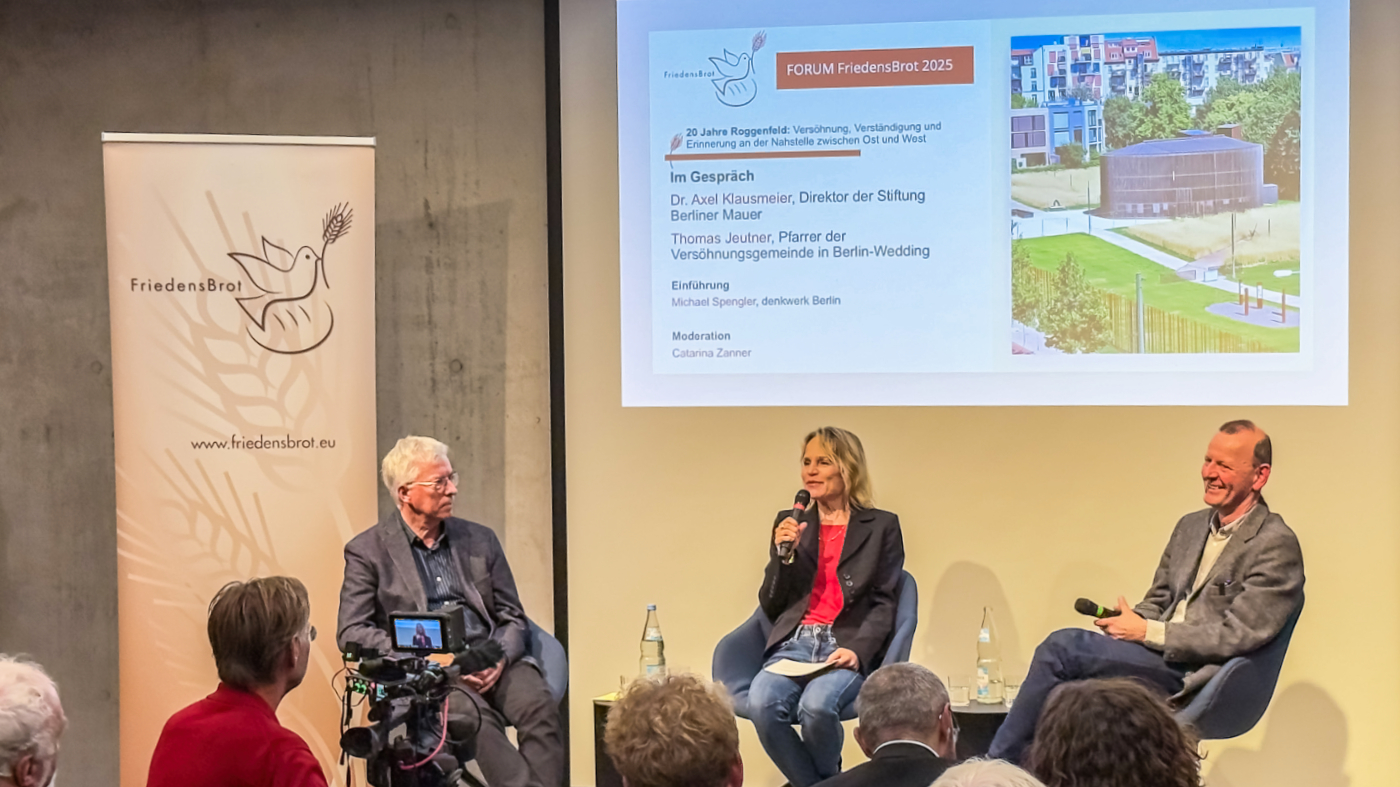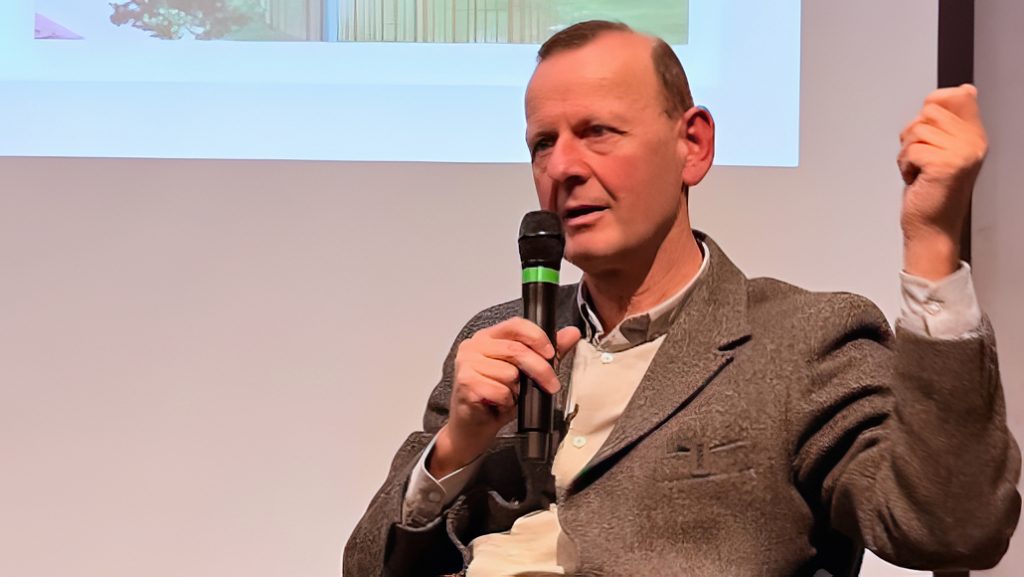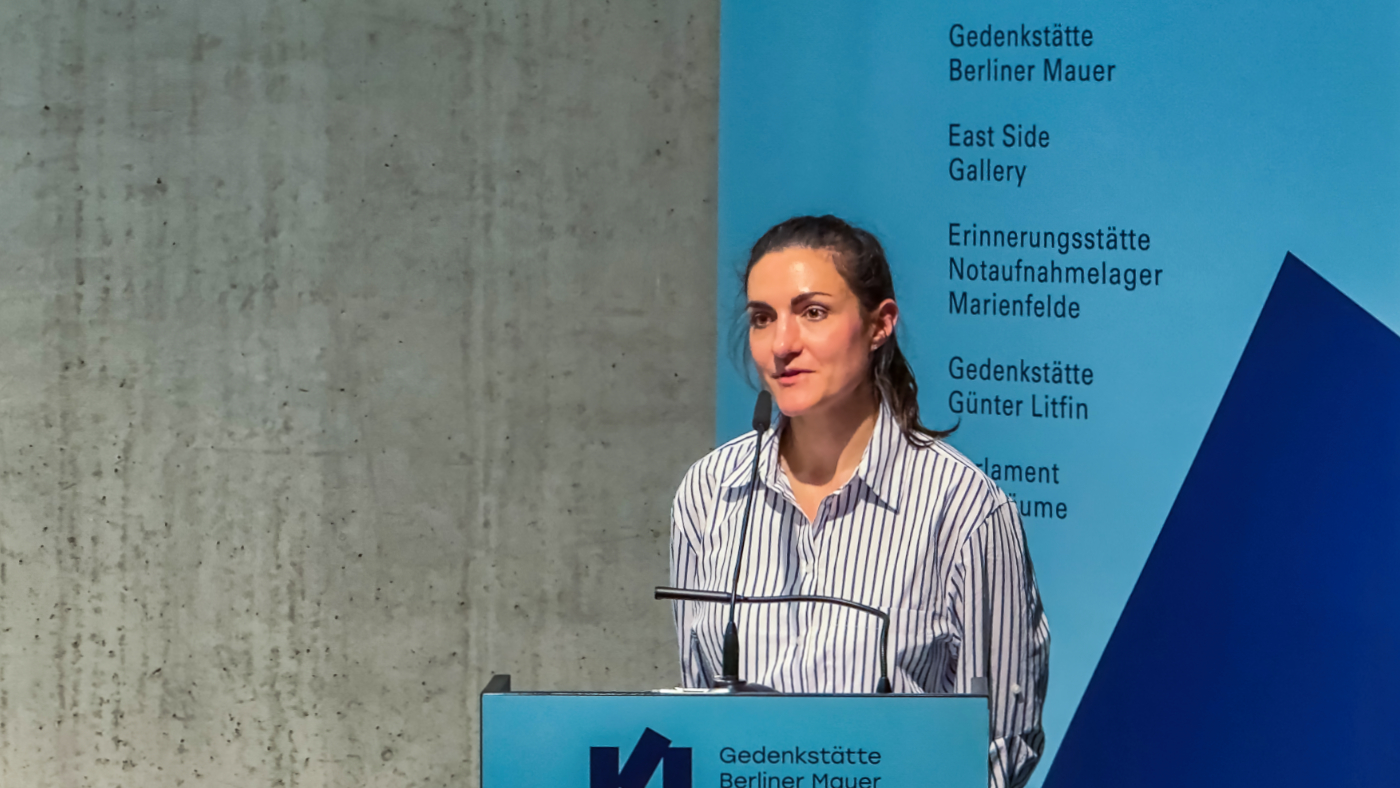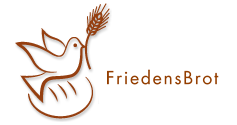
There was much to celebrate in 2025 at the Berlin Wall Memorial: the 35th anniversary of German reunification and the 20th harvest of the rye fields surrounding the Chapel of Reconciliation on Bernauer Straße. A fitting occasion for the PeaceBread Association to dedicate its traditional PeaceBread Forum to the rye fields on the former death strip – and to their twentieth anniversary. The ninth edition of the Forum took place on October 23, 2025, at the Berlin Wall Memorial Visitor Center.
Once again, the Forum vividly demonstrated how deeply the rye field moves and connects people – as a place of remembrance, encounter, and agriculture, growing rye where walls once stood.

At the beginning, Anton Blöth, Chair of the PeaceBread Association, welcomed around fifty guests and expressed his gratitude to all those who have supported the association and the Forum over the years. He paid special tribute to the Berlin Wall Foundation and its dedicated team, the Reconciliation Parish, the Albrecht Daniel Thaer Institute of the Humboldt University of Berlin, which oversees the agronomic management of the fields, and the Andreas Hermes Akademie, with which a close cooperation has existed since the beginning of the year. He also thanked the association’s members and supporters – particularly the Association of German Mills – and the Spandau-based master baker Zimmermann, who bakes the PeaceBread for this and many other occasions.
In his opening remarks, Blöth recalled that without the rye fields, neither the PeaceBread nor the Forum itself would exist. The fields surrounding the chapel, he noted, stand for the power to overcome division in a place that once symbolized separation. Peace and understanding, he emphasized, do not arise by themselves – they must, like a field, be tended and cultivated anew each year. The PeaceBread Association has taken up and carried forward this idea – as a platform for dialogue, cooperation, and exchange across borders, as a bridge between agriculture, peace, and European understanding
The centerpiece of the evening was a conversation between Prof. Axel Klausmeier, Director of the Berlin Wall Foundation, and Pastor Thomas Jeutner of the Reconciliation Parish. Both have been closely connected to the site for many years – one as the head of the memorial, the other as pastor of the parish whose church and land lie directly on the former death strip. The discussion, moderated by journalist Catarina Zanner, unfolded with empathy and curiosity, revealing many personal stories and meaningful insights from both speakers.

Before the dialogue began, artist and architect Michael Spengler – who first conceived the idea of sowing rye on the former death strip – reflected on the beginnings. In the early 2000s, little more than weeds grew on the church’s land. Spengler wanted to create a symbol – of life and change, of becoming and passing away – in a place once marked by death. After consulting with farmers, he chose rye as the symbol: a grain that must perish to bring forth new life. The first sowing raised many questions, including how to harvest the rye at all. By fortunate coincidence, he met Prof. Frank Ellmer from Humboldt University, who provided crucial support. Thus, a lasting connection between art, church, science, and agriculture was formed – one that continues to shape the place and its field to this day.

Building on this history, Klausmeier and Jeutner shared their own encounters with the rye field and what it means for their work.
Born in Germany’s Ruhr region, Axel Klausmeier grew up in a horticultural family business but chose to study art and architectural history instead. As a student, he was already fascinated by Berlin’s fractured urban landscape – and by the Wall as a unique, oppressive “cultural landscape.” In 2009, he became the founding director of the Berlin Wall Foundation. For him, the rye field symbolizes that nature and life have the final word: “The SED did not have the last word,” he said. “It was nature that reclaimed this space – the rye fields are proof of that.”
Pastor Thomas Jeutner, who has served the Reconciliation Parish since 2013, hails from Prenzlau in northeastern Germany. He spoke of his childhood between field and church pew – of his grandfather, who taught him both the value and hardship of farming – and of the path that eventually led him to Berlin. When he first stood before the rye field, he felt its special significance and knew it would shape his pastoral work. He shared stories of encounters that have taken place there and of the profound effect the field has on visitors from around the world.


Both men described how deeply the rye fields move people – surprising, halting, and touching them. In the midst of a memorial where one expects concrete and barbed wire, the rye field stands as a “stumbling stone for life,” a symbol of transformation and reconciliation. It shows that history is never closed but continues to grow – like the rye field itself.
Their exchange made clear how different their perspectives are – one historical and societal, the other spiritual and human – and yet how closely they intertwine. Both share the conviction that remembrance only remains alive when it is shared, passed on, and continually renewed. This also includes practical challenges such as maintaining soil fertility and protecting the fields from vandalism.
With gratitude and humor, they recalled numerous encounters during their years of collaboration, reflecting on the similar “job interviews” that brought them both to Berlin and the pivotal role of Pastor Manfred Fischer in linking the parish, the memorial, and ultimately the PeaceBread project.
In the ensuing discussion, many parish members and eyewitnesses shared their own memories and experiences – of quiet moments, shared harvests, and encounters in the field. Dr. Gibfried Schenk, initiator and long-time managing director of the PeaceBread project, recounted how the idea of sowing “Wall Rye” along the former Iron Curtain grew out of the fields at Bernauer Straße. This later became the European PeaceBread, which since 2014 has brought together people from many European countries.

To close the evening, Dr. Anoush Steinberger-Ficiciyan, who has served as Managing Director of the PeaceBread Association since early 2025, spoke about the most recent “Journey of the Rye” to Hungary, where the 11th annual Peace and Agriculture conference took place. She presented the new “Sourdough C(h)amp” format, designed to engage young people from agriculture and rural areas in the values of peace, dialogue, and mutual understanding. With warm words, she invited the guests to continue the evening in conversation. Over wine, cheese, and freshly baked PeaceBread from Master Baker Zimmermann, the event concluded in a lively and open atmosphere.
